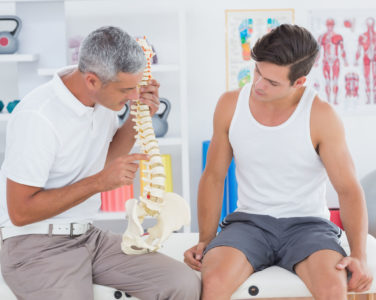 The number of opioid prescriptions in the United States has fallen dramatically, and prescriptions now sit at their lowest levels since 2003 according to new data from the Food and Drug Administration.
The number of opioid prescriptions in the United States has fallen dramatically, and prescriptions now sit at their lowest levels since 2003 according to new data from the Food and Drug Administration.
The data shows that 74 million metric tons of opioid analgesics were dispensed in the first six months of 2018, down more than 16 percent from the first six months in 2017. Although opioid prescriptions have been declining for the past couple years, the bigger decrease in 2018 is likely linked to lawmakers, doctors and patients working against the problem of opioid dependence.
“These trends seem to suggest that the policy efforts that we’ve taken are working as providers, payers and patients are collectively reducing some of their use of prescription opioid analgesic drugs,” said FDA commissioner Scott Gottlieb, MD.
Not All Good News
If we just look at the headline, it’s easy to infer that this is good news. Fewer patients relying on passive and potentially dangerous treatment options should be a good thing, but there are some drawbacks. For starters, the opioid crackdown is undoubtedly hurting a section of patients who use these medications properly and need them to control their discomfort. I’ve talked to patients who have found it harder to get the medications they rely on, and it’s troubling. Good people are getting caught up in the crackdown on opioids.
Perhaps more shocking is that despite the sharp drop in opioid prescriptions, opioid overdoses continue to rise. Although the data from 2018 wasn’t available, nearly 49,000 Americans died from opioid-related overdoses in 2017. This includes overdoses from fentanyl and heroin, which can be eventualities for individuals who become addicted to opioids.
“It isn’t necessarily the case that more people are suddenly switching from prescription opioids to these illicit drugs. The idea of people switching to illicit drugs isn’t new as an addiction expands, and some people have a harder time maintaining a supply of prescription drugs from doctors,” said Gottlieb. “What’s new is that more people are now switching to highly potent drugs that are far deadlier. That’s driven largely by the growing availability of the illicit fentanyls.”
Police data shows that a record amount of fentanyl (1,640 pounds) and heroin (5,500 pounds) have been seized by law enforcement this year, and we’re not even two-thirds the way through the calendar year.
Clearly we’re still losing the war on opioid overdoses, even if we hear headlines that suggest prescriptions are at a 15-year low. Chronic pain patients are caught in the crossfire, and overdose-related deaths continue to surge. We need to invest more money into understanding and treating chronic pain conditions in order to really make a difference.
 Pain can be fluid or come in waves, so it can be very difficult to explain what you’re going through to your family, friends or doctor. When it comes to explaining your pain to us, we don’t expect you to be able to perfectly describe it or be able to give us a clear idea of what’s going on. After all, if you knew what was causing the issue, you’d probably already have a strong treatment plan in place.
Pain can be fluid or come in waves, so it can be very difficult to explain what you’re going through to your family, friends or doctor. When it comes to explaining your pain to us, we don’t expect you to be able to perfectly describe it or be able to give us a clear idea of what’s going on. After all, if you knew what was causing the issue, you’d probably already have a strong treatment plan in place. If you’re a frequent reader of this blog, you know that we like to pitch certain conservative treatment options for chronic pain. Activities like
If you’re a frequent reader of this blog, you know that we like to pitch certain conservative treatment options for chronic pain. Activities like  Chronic pain is a huge problem in Minnesota and throughout the United States, and more people are becoming aware of the issue and trying to help spread awareness. One group that is attempting to help keep people informed and find solutions to chronic pain is Minnesota MD News!
Chronic pain is a huge problem in Minnesota and throughout the United States, and more people are becoming aware of the issue and trying to help spread awareness. One group that is attempting to help keep people informed and find solutions to chronic pain is Minnesota MD News!